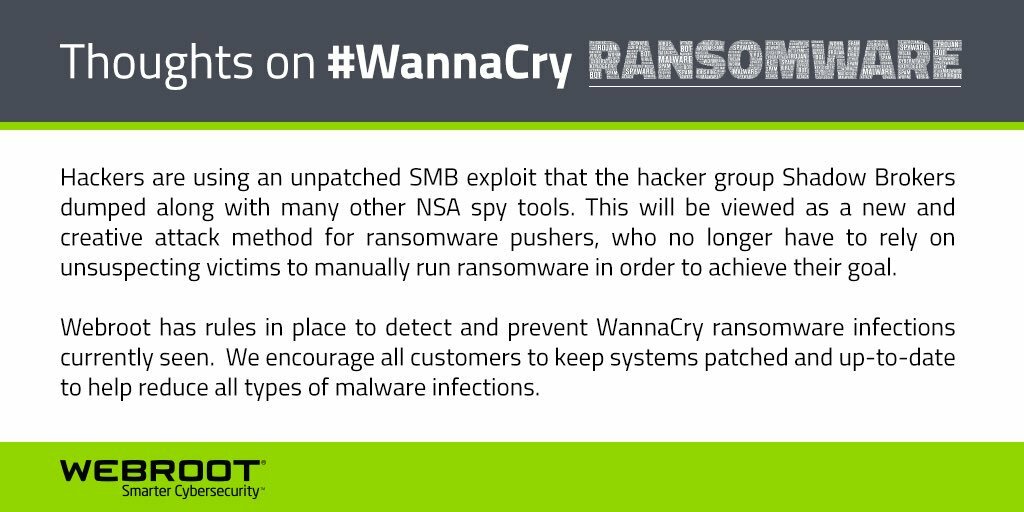Where can I go to verify whether or not Webroot detects the current Wannacry malware?
I've tried checking the kb and blog but no info. You'd think with this being a global news story, Webroot would have published something specifically on this by now?
Solved
Is WSA updated to detect the current Wannacry ransomeware
This topic has been closed for replies.
Login to the community
No account yet? Create an account
Enter your E-mail address. We'll send you an e-mail with instructions to reset your password.




